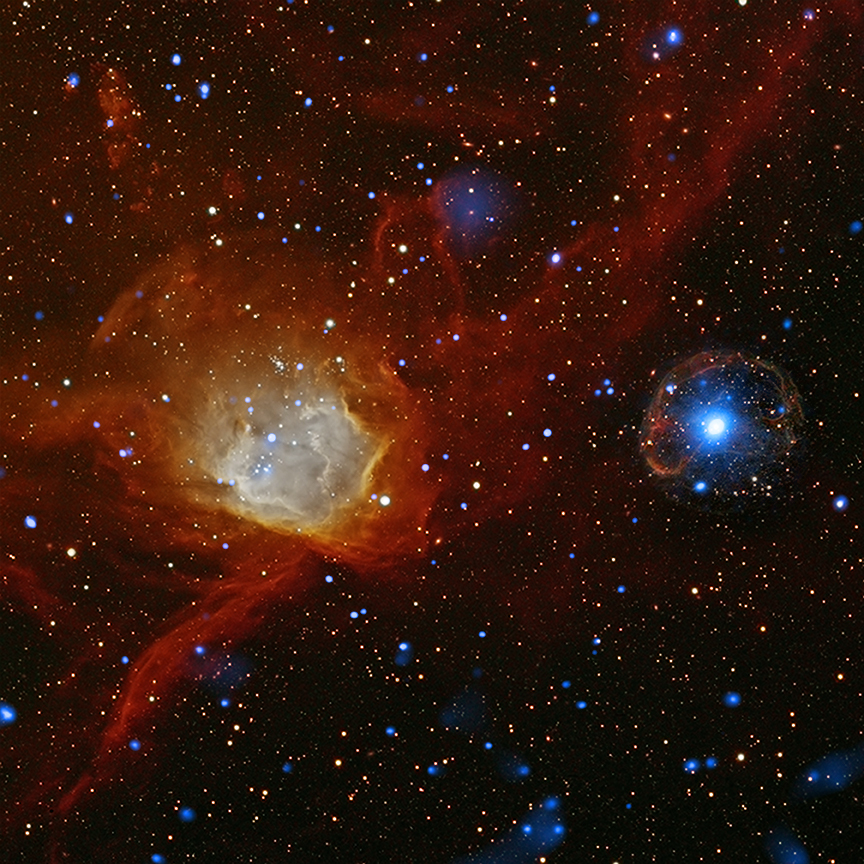 The Variable Star Astronomy educational materials are about to get some attention at the national level. As the Lead Educator for the Chandra E/PO Office, I was asked by Ardis Herrold, the current president of the National Earth Science Teachers Association (NESTA) if Chandra would be willing to sponsor an issue of The Earth Scientist (TES) – the NESTA educator magazine that is published four times a year. The Chandra E/PO Office was willing, and is sponsoring The Earth Scientist Spring Issue that will be published in March, 2012. (The combination image/illustration will be on the cover.)
The Variable Star Astronomy educational materials are about to get some attention at the national level. As the Lead Educator for the Chandra E/PO Office, I was asked by Ardis Herrold, the current president of the National Earth Science Teachers Association (NESTA) if Chandra would be willing to sponsor an issue of The Earth Scientist (TES) – the NESTA educator magazine that is published four times a year. The Chandra E/PO Office was willing, and is sponsoring The Earth Scientist Spring Issue that will be published in March, 2012. (The combination image/illustration will be on the cover.)
I decided that we should include two articles describing two of our imaging activities; the introductory activity called Decoding Starlight: From Pixels to Images and Investigating Supernova Remnants so we could highlight the Chandra ds9 image analysis software. I asked Doug Lombardi to write those two articles – and his wife Janelle Bailey to write the Guest Editor column.
The two articles I wrote for TES was a lot more involved because I decided to write about materials that were not yet completely developed and not posted on the Chandra website. The first article describes Ice Core Records – From Volcanoes to Supernovas, an investigation based upon using absolute and relative dating techniques with high resolution ice core data, historic volcanic eruptions, and solar proton events to correlate nitrate anomalies with historic supernova events. The truly multidisciplinary aspect of the investigation and supporting background materials give teachers the capability of incorporating the materials within several science disciplines as well as the associated and rich historical context – and address multiple key national science standards. The Ice Core Records materials are finished and posted on the Chandra website – with the first installment of a podcast with Gisela Dreschhoff – the project scientist whose ice core data is the basis for the classroom investigation. The Ice Core Records – From Volcanoes to Supernovas is the first investigation listed at: http://chandra.harvard.edu/edu/formal/index.html
The second article describes Pulsating Variables and the Hertzsprung-Russell (H-R) Diagram – an activity from Chapter 9 in the Variable Star Astronomy curriculum. The activity involves plotting 4 classes of intrinsic pulsating variables – Cepheids, RR Lyraes, Miras and Semiregulars. The Chandra E/PO office constructed a new high resolution H-R diagram and answer key for me to use with the activity. I have always wanted to make this a stand-alone activity with supporting background information. There are many teachers who include H-R diagrams in their classrooms; however, there is still only one basic H-R diagram plotting activity that has been around for decades – plotting the brightest and the nearest stars. Plotting variable stars gives a much better sense of what the H-R diagram is – a tool to study the evolution of stars. It also provides the chance to show teachers and students that OBAFGKM are not the only classifications for stars, because those are usually the only classes that are shown on the H-R diagrams used in the world of education. I think this activity is a fresh and interesting addition to the study of stellar evolution, and having it on the Chandra website provides the opportunity of making a larger audience of educators aware of the VSA curriculum and the AAVSO website. I have all of the materials completed, and am waiting for a change to be made to the H-R diagram answer key that I requested. Once that is done, I will send all materials to the E/PO office and wait for them to be posted on an inactive link so I can edit the materials one last time. They will be posted within the next couple of weeks (no later than mid-February) on the same page as the Ice Core Records materials – just scroll down to Variable Stars. Or if you want to go directly to the Variable Star/H-R Diagram activity go to:http://chandra.harvard.edu/edu/formal/variable_stars/plot.html
The Chandra E/PO Office is providing NESTA with 3500 Stellar Life Cycles card sets for insertion into TES. The card set is part of the Stellar Life Cycles activity that I wrote several years ago as a pre and/or post assessment activity for stellar evolution. Unlike the second card set (Cosmic Connections) which is more general in nature, The Stellar Life Cycles card set is more technical and includes images of light curves and H-R diagrams – making it a perfect resource to use with Pulsating Variable Stars and the Hertzsprung-Russell (H-R) Diagram. NESTA will mail 1500 of The Earth Scientist magazines to their membership, and the remaining 2000 will be distributed via Chandra workshops, conferences and meetings. Chandra E/PO is also paying for a PDF unlimited download version of the issue. Aaron has indicated he would like to have 100 of the issues for AAVSO to distribute, and they will be sent to AAVSO when they arrive.
This blog entry was written by Donna Young.

